THE REDBIRD REVIEW
The front office and ownership of the St. Louis Cardinals are planning a different kind of season in 2025. The prime objective won’t be winning as many games as possible, and doing everything they can to make the postseason. It won’t be about maintaining a top 12 payroll, or leaning hard on experienced players.
The goals are best described this way:
– Do a comprehensive renovation of an outdated, underfunded, understaffed and ramshackle player-development and minor-league system.
– Going younger with the 40-man roster.
– Slashing major-league payroll.
– Hopefully putting a competitive team on the field.
Just after the completion of the 2024 season, Cardinals president of baseball operations John Mozeliak described the Cardinals as “taking a step back” in 2025. But his message has been more optimistic in recent weeks. Perhaps in an effort to reduce the damage in home attendance and lower team revenue, Mozeliak has tried to appeal to a skeptical fan base by using words like “exciting” and “entertaining.”
Mozeliak has also said the ‘25 Cardinals “can be better than expected.” And though this could change, the Cardinals have maintained an oddly stubborn stance about keeping pending free-agent pitchers Ryan Helsley and Erick Fedde instead of trading them this offseason when both are at their highest value. The closer Helsley and No. 2 starter Fedde can – and almost certainly will – leave as free agents after the coming season.
By publicly signaling a determination to keep these two coveted assets, Mozeliak undoubtedly hopes to convince ticket-buying fans that the Cardinals are still trying to win and will not implode the roster as part of an extensive rebuild.
The Cardinals, Mozeliak said recently, “have every intention of fielding a good baseball team.”
Things are blurry these days.
For the 2025 Cardinals, how do we define good?
How do we quantify success?
How can the Redbirds exceed expectations when we aren’t sure what those expectations really are?
I’ll give it a try. But I’m not forming the definition of success based on the number of wins, or the chances of contending for first place in the NL Central or staying in the race for a wild-card playoff spot.
If any of that occurs, it would be an interesting season. And depending on how you see it, an interesting and entertaining season could qualify as exceeding expectations.
I just don’t know; the Cardinals have confused me by trying to have it both ways. They’ve gone from “taking a step back” to – hold on, wait a minute – “we have every intention of fielding a good baseball team.”
I wonder if the Cardinals understand something, and it’s important: you can pump up the optimism to get wary, suspicious fans more in the mood to feel better about the 2025 Cardinals … but you’d better be right. Because if you try to gently (or not so gently) raise hopes out there, only to go tumbling down in 2025, then all that gets you is a more frustrated, angry fan base that will accuse you of gaslighting them … again.
The Cardinals would be much better off by being absolutely truthful about what 2025 is supposed to be – and is designed to be. But heck, at this point, they may not even remember what they said a couple of months ago. All of the ensuing spin may have left members of the front office dizzy.
Here’s my list of developments that must take shape – most of them – for the Cardinals to have a positive season, a successful season, a good season. I’ll go nine innings …
1. Jordan Walker and Nolan Gorman making a quantum jump. And I’m not asking them to do something they haven’t done before. They just have to get it done more often.
Gorman has spent 16 individual months in the big leagues. Walker has clocked eight individual months in the majors with the Cardinals. Needless to say, both have been agonizingly erratic and inconsistent. So how do they pass the test?
Here’s one way: I took their numbers in their “good” months as Cardinals and separated them from the below-average or just bad months. I’m focusing on their above-average months for a simple reason; it shows us what they have to do.
Here’s Gorman, in his eight above-average months – and I tossed in his one average month to be part of this statistical look:
+ 587 at-bats
+ .351 onbase percentage
+ .528 slugging percentage
+ .879 OPS
+ 44 home runs, 115 RBIs
+ 12 percent walk rate.
That computes to a home run every 13.3 at-bats. The strikeouts are an issue, but in his good months Gorman balanced the whiffs with a higher walk total. I don’t think Gorman has to put up numbers that match what I’ve listed. But he has to move in that direction in a way that reinforces his confidence … and the team’s confidence in him.
OK, now lets do Walker, using his three above-average MLB months, plus one average month:
+ 350 at-bats
+ .348 onbase percentage
+ .483 slugging percentage
+ .831 OPS
+ 18 doubles, 16 homers, 48 RBI
Walker’s walk needs to be higher, and he has to do a better job of limiting strikeouts. And it is imperative for Walker to make adjustments that will lead to fewer ground balls and more flies and line drives.
If Gorman and Walker can do a reasonably good job of approaching the numbers they put up during their best months as Cardinals, then I’m sure most of us will be happy. (Serial haters excluded.)
2. Give Ivan Herrera the playing time to let him grow and show. The young catcher needs to improve his throwing and reaffirm his talent as a hitter. It’s that simple. But this can be done by letting him play, and play and play.
Though Herrera’s numbers were boosted by a .370 batting average on balls in play – which could be hard to repeat – his OPS+ was the second-best on the 2024 Cardinals among hitters that had at least 250 plate appearances. Willson Contreras was first at 36 percent above league average offensively, and Herrera was second at 24% above average. The Cardinals can’t take that for granted by giving the largest share of playing time to catcher Pedro Pages.
3. Lars Nootbaar stays healthy and the numbers percolate. Sigh if you’ve heard this before. But I’ll write it again: when the outfielder has played extensively and without interruptions by injury, the more he delivers offensively. Too much time on the IL not only takes Nootbaar out of the lineup, but he’s usually rusty when he returns and needs time to find his rhythm and confidence at the plate.
When Nootbaar has had at least 89 plate appearances in a month as a Cardinal, his average OPS is .834, his average slugging percentage is over .500, and his park-and-league adjusted runs created (wRC+) is 30 percent above league average. In 2025, Nootbaar has to play between 135-145 games instead of missing time that takes him down to around 95-100 games.
4. The Cardinals live up to their pledge and give an opportunity to younger starting pitchers. Andre Pallante, 26, isn’t a kid. But he’s made only 30 major-league starts, and has done pretty well, pitching to a 3.69 ERA in 166 innings in those assignments. Pallante has to build on his 3.56 ERA in 20 starts last season. Michael McGreevy was a first-round draft choice in 2018. It took him a while to establish his readiness for the major leagues, and he passed a limited audition last summer with a 2.25 ERA in three starts. And in 2025 it’s time to give McGreevy a much fuller examination that can secure a rotation spot. If the Cardinals don’t do this, then the “play the kids” marketing pitch is a sham. Period.
Elite pitching prospects Quinn Mathews and Tink Hence are in a different category because they’re still in the process of making their way through the minors. But Matthews is getting close; Hence isn’t far behind. Both can use more time in the minors, but if they stay healthy in 2025 and crank out a bunch of impressive starts in their additional minor-league showcases, then the Cardinals need to make some room at the big-league level instead of wasting everyone’s time by sticking with mediocre veterans.
5. Here I go again: it’s a successful season if the Cardinals cash in on Helsley and Fedde rather than take the risk of seeing one or both pitchers get stricken by an injury that would destroy their trade value at the trading deadline. I could have put this second on the list, but I figured y’all needed a break from my speeches on this particular matter. But seriously … since this organization has designated 2025 as the Year of the Young, then they have to prove it through action. I’ve already talked about the young starters and how it’s important for this team to open spaces for them. But can young reliever Ryan Fernandez establish himself as the closer in waiting for 2026? Maybe he can … but only if he receives the opportunity to close in 2025. And this is the year to do it.
6. Masyn Winn turns it up a notch or two and leads the Cardinals in multiple ways. No need to review Winn’s outstanding rookie season. With Paul Goldschmidt gone to the Yankees and Nolan Arenado presumably being the next veteran to depart via trade, Winn will unofficially become the team’s star in 2025. In terms of performance, he already emerged as the team’s star in 2024. And while Winn will turn 23 in March – he’s still so young – he can team with Willson Contreras and Brendan Donovan to take over leadership responsibilities in the clubhouse. It’s important for the Cardinals to cultivate the next generation of leaders in 2025. Contreras and pitcher Sonny Gray have the seniority, but younger Cardinals have to move up to reinforce the standards established by the elders.
(Oh, and one more thing: if manager Oli Marmol insists on batting Winn at leadoff again in 2025, Winn has to do much, much better than post a poor 5.5 percent walk rate and a substandard .290 onbase percentage as the No. 1 hitter in the lineup. And I offer that as an enthusiastic fan of Masyn Winn.)
7. Rookie Thomas Saggese proves that he can handle the super-utility tool role previously manned by Tommy Edman and Brendan Donovan. As we know, the Cardinals want to trade Arenado, in part, to plant Nolan Gorman at third base, which is Gorman’s natural position. But evidently the Cardinals are planning to go with Brendan Donovan at second base. Which is interesting; with this being the Year of the Young and all of that, I just assumed the Cardinals would give Saggese a chance to become the primary second baseman. And Donovan, who turns 28 next month, is hardly a baby bird. But … whatever. Donovan is so skilled at handling so many defensive positions on the field, and his versatility provides special value. But I guess it’s only the Year of the Young at third base, and catcher and shortstop … though Winn already is locked in at shortstop.)
If the Cardinals play Donovan at second base, then Saggese will have an early opportunity to show that he can take care of business as a roaming infielder, moving to and fro from second base, to shortstop and third base. (Would left field be included in Saggese’s territory? I ask because Donovan plays well in left when utilized there.) Anyhoo, if Saggese has a good toolbox, he’ll be a valuable fix-it man at several spots. And if he can’t do it as well as hoped, then the Cardinals will have a void to fill.
8. Infielder JJ Wetherholt graduates to the big club late in the 2025 season. This would be a big deal; the seventh overall pick in the 2024 draft is essential to this team’s long-term future. And a quick trip though the minors would be an exciting development that re-energizes the fans.
9. It can be a successful year if manager Oli Marmol and staff show they can foster legitimate and lasting improvement in the younger players in a way that lifts them out of the inevitable slumps and confidence-busting downturns. This has not been a strength of this dugout staff, and the first way to change that is to actually play the young positional talents and young arms instead of just talking about doing it.
It’s a tough spot for a manager who must weigh the responsibility of doing what’s best for young Cardinals – relative to doing what’s best for his own future. Going young will likely lead to fewer wins … but will the front office blame Marmol for that? I can’t answer the question because the front office continues to revise the script for what we should expect in 2025 … and what’s most important in 2025.
Thanks for reading!
–Bernie
For the last 36 years Bernie Miklasz has entertained, enlightened, and connected with generations of St. Louis sports fans.
While best known for his voice as the lead sports columnist at the Post-Dispatch for 26 years, Bernie has also written for The Athletic, Dallas Morning News and Baltimore News American. A 2023 inductee into the Missouri Sports Hall of Fame, Bernie has hosted radio shows in St. Louis, Dallas, Baltimore and Washington D.C.
Bernie, his wife Kirsten and their cats reside in the Skinker-DeBaliviere neighborhood of St. Louis.



